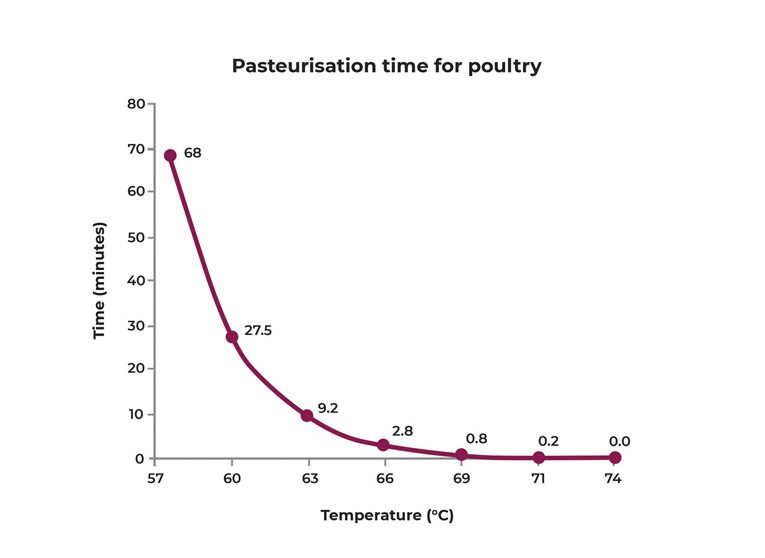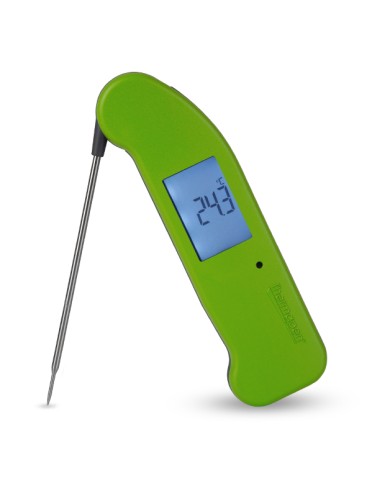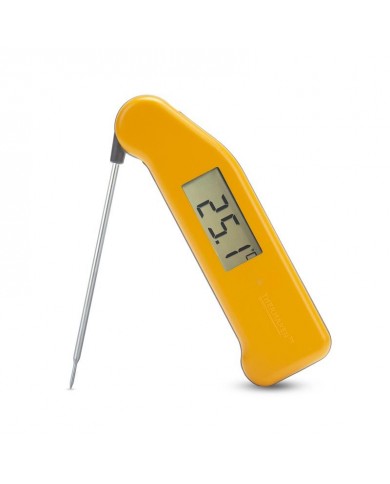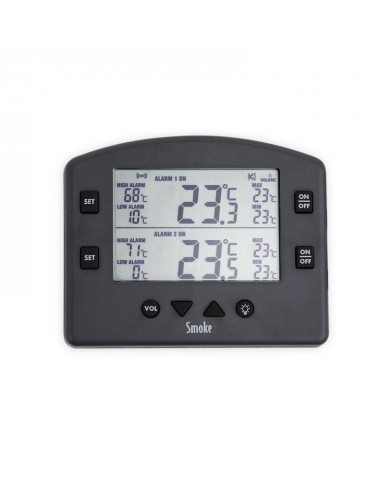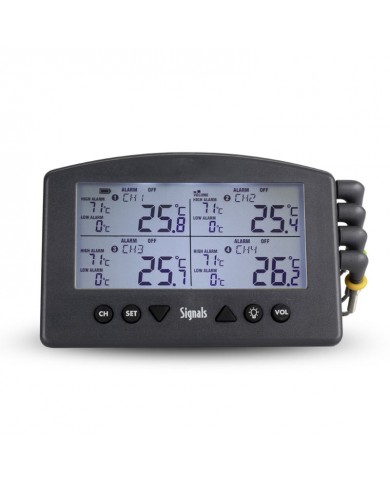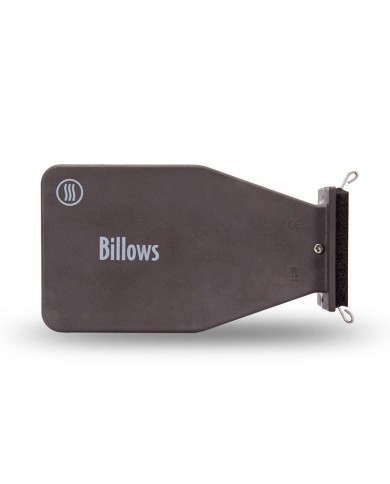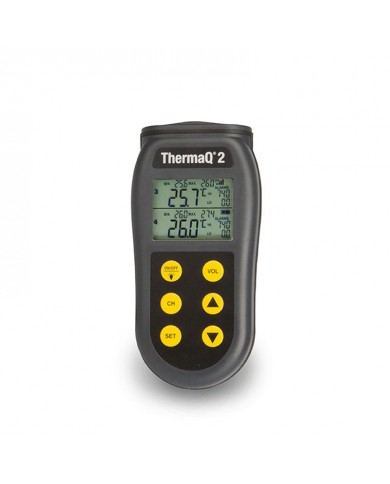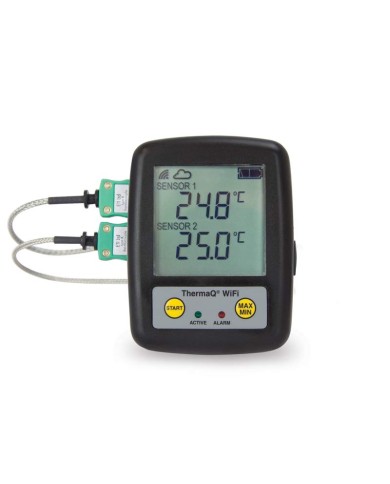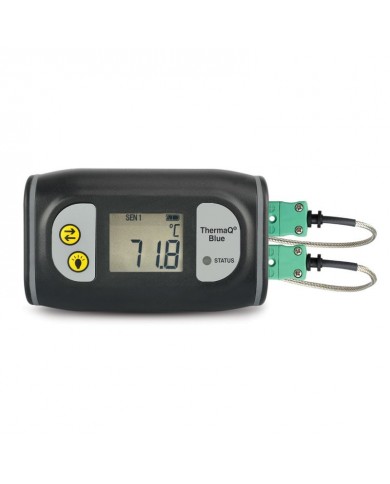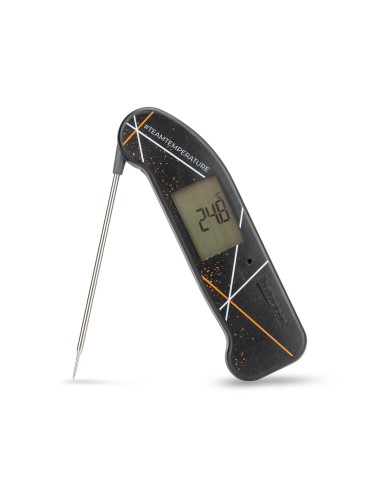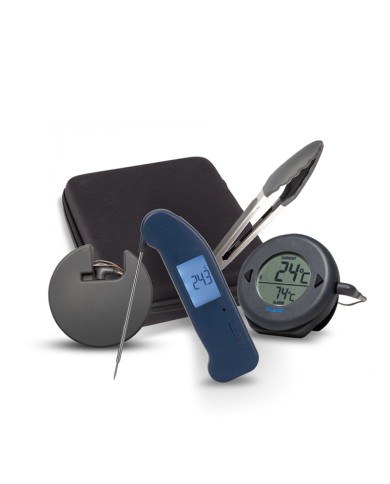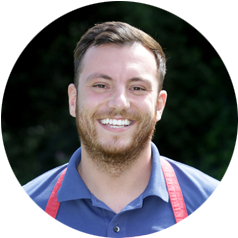How to Rest Meat — The Ultimate Guide
- 31 Mar 2022
- Home , BBQ , Chefs , Tips, Advice & Info , Mike Tomkins , Low & Slow

How long should steak rest? How to rest meat? Why do you rest meat? MasterChef finalist 2021 Mike Tomkins answers these questions and more in this ultimate guide.
Growing up in my house, all food had to be served piping hot. If it didn’t burn the roof of your mouth as you ate it then it was considered cold. This rule applied to all food, including meat. Looking back, this is a strange one, because when was the last time you went into a half decent restaurant and the food was scalding?
I remember how steak was whipped from the pan and hastily launched onto your plate, which was then thrust into your hands so that you could eat it before it went cold. I am confident that I’m not alone in this! And maybe some of you reading this now are slowly nodding your head, thinking about how you take your steak straight off the BBQ and onto your plate and then dig straight in.
I’m here to tell you there is another way, a better way. Rest your meat. Be it chicken or beef, a fillet or a roasting joint, pan seared or cooked low and slow – it will benefit from a good rest before you dig in or carve.
Why DO YOU REST MEAT?
Without getting into the science of it all, when you cook meat, you fundamentally alter the proteins that make up what you’re eating. Muscle fibres in the meat firm up, and the meat itself shrinks and tightens. If you cut straight into the meat, “blood” seems to pour out onto your cutting board or plate.
This is what’s causing you to have a tough end result. I know how devastating that can be; you’ve cooked something perfectly to the temperature, and it looks great, but the texture isn’t right. You’ll hear chefs on programmes like Great British Menu scalding themselves for not resting meat long enough, and this is usually because the result is a slightly tougher finish than they were hoping for!
Rested vs unrested steak; you can see how the rested steak looks more tender, juicy and perfectly cooked all the way through.
Rested steak
Unrested steak
The “blood” is myoglobin and needs to be reabsorbed by the meat, this process happens during resting. All of the juice that’s within the meat redistributes leaving every mouthful tender and juicy.
I think the biggest myth about resting is that your food will be cold if you let it rest – this just simply isn’t true. In fact, especially with a large joint, you have what’s called carryover cooking. This is where the residual heat continues to cook the meat. In larger joints, this can be as much as 10 °C. With smaller cuts, you’re likely to get a swing of a few degrees, so always factor this into your cooking. It’s this residual heat that ensures your steak isn’t going to go cold.
HOW TO REST MEAT
How long should I rest my meat for?
The general rule of thumb is a minimum of one minute per 100g of meat, but to be honest there’s no set rules! Like cooking, it’s all about temperature and not time! Once the temperature has stopped rising and even started dropping a couple of degrees, you’re good to go.
Should I re-add my resting juices to the top of meat?
Resting juice is packed full of flavour! Savour that liquid gold and add it to your sauce! That’s the best way to use it.
What should I rest my meat on?
I really like a meat resting board, it’s basically a chopping board with a wire rack over the top. It allows air to circulate so the temperature regulates properly. But feel free to just use a plate instead.
My temperature is too high, should I still rest my meat?
We’ve all been there, gone back to check that rib of beef and the temperature is too high and now you want me to rest it!? It’s going to keep rising in temperature!
Well, yes, this is true. You will still have some temperature climb, but I would still recommend resting. I actually had a rib of beef, and exactly this happened. I rested the beef by an open window, and the breeze slowed the cooking process, so the carryover cooking was reduced massively — it still wasn’t cold!
Should I cover my meat whilst resting?
I’m personally not a huge fan of covering meat when resting it. If you cover it with foil, you’ll definitely keep the temperature in the meat for longer. But you’ll also increase the carryover cooking and risk overdoing it.
With a large joint of beef, you could always cook it under deliberately and rest for a few hours wrapped in foil if you really wanted to! With a roast chicken, you’ll lose that crispy skin but you’ll get a really moist centre as the cooked bird will almost steam — so there are pros and cons!
Rested VS unrested STEAK - the ultimate test
In the video below, I cooked two thick-cut rib-eye steaks to demonstrate the difference between a rested piece of steak and an unrested piece. Both were cooked in the same way before being rested (or not) and then sliced.
Steak is a brilliant visual representation of resting meat, the colour is different – an unrested steak goes a strange grey colour whereas a rested steak turns to a perfect pink which is distributed throughout the whole cut, not just in the centre.
You can also really see the difference in the firmness of the two steaks; when cut thin, one bends and flops whereas the other is taught and stiff from where the fibres are still tightened. Of course, you can also see the juice pooling around the one that hasn’t rested! What a waste!
RESTING CHICKEN
Chicken is another great one for testing out resting meat, but it’s quite hard to give you a good visual of that. If you search for “cooked chicken temperature” on Google, the most common result is 75 °C – if you cook to this temperature, you’ll end up with dry meat that needs to be covered in gravy. This is because USDA states that chicken is safe to eat at this temperature, right out of the oven, with no resting.
The below graph shows how long chicken needs to remain at a certain temperature to be deemed safe to eat. Next time you cook a roast chicken, cook it until the internal temperature reaches 65 °C and then let your chicken rest for an hour before carving up. Now you realise you can trust me, roast another chicken, pull it off at 60 °C and let that bad boy rest as well. Following these steps always results in perfectly juicy chicken, I promise!
